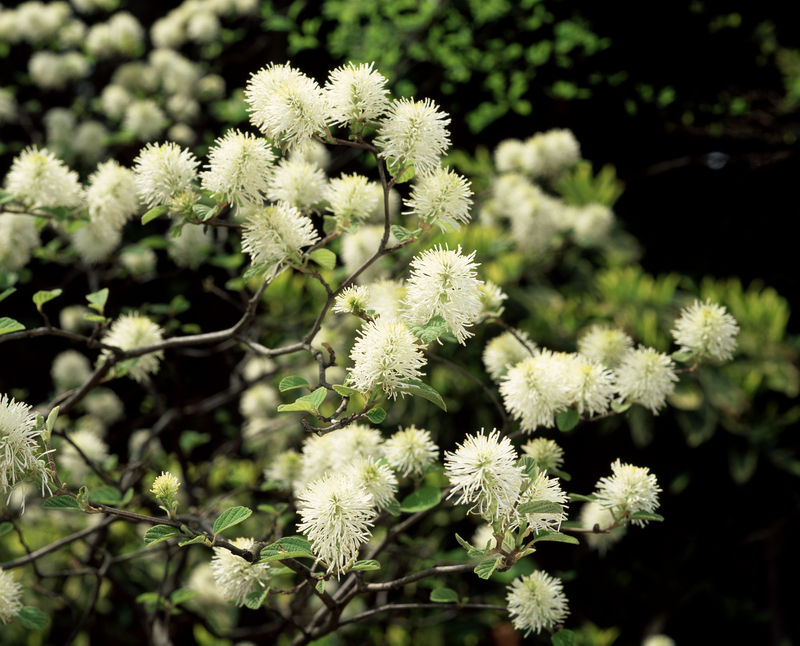Explore how your backyard garden can be a tool for climate action
Posted on 26/09/2025
Explore How Your Backyard Garden Can Be a Tool for Climate Action
As global temperatures rise and climate change becomes increasingly critical, more individuals are asking how they can contribute to protecting the planet. Amazingly, your backyard garden can be a powerful tool for climate action. From enhancing biodiversity to storing carbon and reducing your carbon footprint, a sustainable home garden offers numerous opportunities to support climate mitigation and adaptation. In this comprehensive guide, you'll discover actionable ways to turn your own garden into a green climate champion.
Understanding the Climate Impact of Gardening
The modern world's carbon footprint is driven by energy consumption, food supply chains, and land use changes. By transforming the way we garden at home, individuals can meaningfully impact these factors. Eco-friendly gardening practices can both reduce your environmental footprint and actively combat climate change. Let's explore how:
- Capturing carbon dioxide from the atmosphere via healthy soil and plants
- Reducing food miles by growing your own fruits and vegetables
- Supporting pollinators and wildlife which are vital for ecosystem balance
- Minimizing waste through composting and mulching
- Lowering water consumption with smart gardening techniques
Why Backyard Gardens Play a Key Role in Climate Solutions
While large-scale policy and technology are crucial, grassroots actions build cumulative power. Backyard gardens--when managed sustainably--turn local efforts into part of the global movement against climate change. Imagine millions of gardens acting as mini climate stations: they capture carbon, nurture beneficial insects, and produce healthy food, reducing reliance on carbon-heavy supply chains. Every small step in your garden contributes to a larger climate action narrative.

How Your Garden Stores Carbon and Fights Climate Change
One of the clearest ways gardens participate in climate action is through carbon sequestration. This is the process of capturing and storing atmospheric carbon dioxide (CO2). Plants naturally absorb CO2 during photosynthesis and store it in their tissues and in the soil--a process known as carbon capture.
Tips for Maximizing Carbon Sequestration in Your Backyard Garden
- Plant trees and woody shrubs: Trees can absorb large amounts of CO2 over their lifespans. Native species are best adapted to local conditions, enhance resilience, and support wildlife.
- Grow perennial plants: Unlike annual crops, perennials have deep rooting systems and regrow every year, helping to lock more carbon in the soil.
- Utilize cover crops and groundcovers: These keep soil covered year-round, reducing soil erosion, boosting soil organic matter, and sequestering more carbon.
- Minimize soil disturbance: Practicing no-dig or low-till gardening preserves soil structure and beneficial soil microbes, enhancing the garden's ability to trap and store carbon.
Reducing Your Household's Carbon Footprint with Your Garden
Beyond capturing carbon, a climate-friendly garden lowers greenhouse gas emissions associated with household living. Here's how you can take action:
1. Grow Your Own Food and Reduce Food Miles
Transportation, processing, and packaging of food contribute significantly to global emissions. By growing herbs, vegetables, and fruits at home, you:
- Eliminate food miles--the distance food travels from farm to table
- Reduce need for packaging and refrigeration
- Slash emissions from industrial agriculture
Top tips for sustainable food gardening:
- Choose easy-to-grow staples (lettuce, tomatoes, beans, carrots)
- Use heirloom or organic seeds for better resilience
- Practice crop rotation to maintain soil health
2. Make Compost, Not Landfill Waste
Composting kitchen and garden waste turns organic material into nutrient-rich soil conditioner, rather than letting it rot in landfills where it emits methane--a potent greenhouse gas. Start a compost pile or bin using:
- Fruit and vegetable scraps
- Coffee grounds and paper filters
- Yard waste--leaves, grass clippings, small branches
- Non-glossy paper
Bonus: Healthy compost boosts soil carbon storage and plant health!
3. Ditch Synthetic Chemicals
Synthetic fertilizers and pesticides are energy-intensive to produce and disrupt natural soil and water cycles. By switching to organic gardening practices, you keep pollinators safe and promote soil microbial life that helps absorb carbon. Choose natural pest remedies, mulch with organic matter, and favor homemade compost over store-bought fertilizers.
4. Conserve Water (and Energy!)
Gardens can consume significant water, especially in drought-prone regions. Reduce your garden's water and energy impact with these techniques:
- Capture rainwater using barrels or swales
- Water deeply and less frequently to encourage deep roots
- Use native drought-tolerant plants
- Mulch extensively to lock in soil moisture
Saving water also cuts your household's energy use since water treatment and transport require electricity--often generated through fossil fuels.
Boosting Biodiversity for Climate Resilience
Biodiversity is vital for climate resilience. A diverse garden provides ecosystem services like pollination, pest management, and temperature regulation. By welcoming a variety of plants and wildlife, you help buffer your yard and community against extreme climate events.
How to Turn Your Garden Into a Biodiversity Haven
- Plant a mix of native flowers, shrubs, and trees--select species with different bloom times to support pollinators all year
- Build insect hotels and install birdhouses
- Create a mini pond or water feature for amphibians and beneficial insects
- Avoid pesticides and provide "messy" spaces of logs, leaf litter, or undisturbed corners
Biodiverse gardens also support climate adaptation by attracting beneficial species that help control pests and prevent plant diseases--meaning less reliance on energy-intensive interventions.
Sustainable Landscaping and Yard Design
Traditional turf lawns demand high inputs of water, fertilizers, and mowing. In contrast, climate-resilient landscape design uses eco-friendly principles to reduce climate impacts and create abundance. Consider these alternatives:
Replace Some Lawn With Native Landscaping
Swap turfgrass for native groundcovers, wildflower meadows, or edible landscapes. These require less water, fertilizer, and maintenance, all while supporting greater biodiversity and soil health.
Embrace Edible Forest Gardens or Permaculture
Permaculture gardens mimic natural ecosystems. By layering trees, shrubs, herbs, and groundcovers, forest gardens capture more carbon, reduce soil erosion, and yield food with little input.
Practice Mulching and No-Dig Gardening
Mulch with leaves, straw, or wood chips to reduce evaporation, smother weeds, and build soil health--all key for climate resilience. No-dig gardening minimizes soil disturbance, preserving carbon and soil life.
Community and Climate Action: Sharing and Learning From Your Garden
Your gardening efforts effectively multiply when shared with neighbors, schools, or local groups. Community-based gardening enhances local food security, spreads climate-friendly knowledge, and builds resilience. You can contribute by:
- Selling or donating surplus produce to neighbors or local food banks
- Organizing seed swaps and plant sharing events
- Teaching others about water conservation or composting
- Supporting pollinator pathways across backyards and urban spaces
Collaboration ensures your garden efforts ripple out, amplifying their impact on local and global climate action!
Overcoming Common Challenges for Climate-positive Gardening
Many aspiring eco-gardeners face barriers, from limited space to water scarcity and lack of know-how. Don't let these stop you--climate smart gardening can be adapted for any situation:
- Small space? Try vertical gardening, container planting, or window boxes
- Poor soil? Build raised beds, add compost, or try no-dig techniques
- Shady yard? Opt for shade-tolerant crops and native woodland plants
- Low rainfall? Go drought-tolerant with succulents, herbs, or xeriscaping principles
Start small--planting just a few climate-adapted plants or starting a compost bin can make a real difference over time.
Future-Proof Your Backyard: Building for Climate Adaptation
Climate change means more extreme weather, from heat waves to storms. Smart garden design incorporates adaptation strategies to buffer against these events. Consider these climate adaptation steps:
- Plant for shade and cooling: Trees and large shrubs block sun and reduce summer heat in your home and garden
- Direct and store rainwater: Use swales, permeable paving, and rain gardens to manage water on-site
- Choose resilient crops: Select varieties tolerant of heat, drought, or unexpected weather shifts
- Build windbreaks: Dense hedges or tree lines shield your garden and reduce soil loss during storms
A well-designed climate resilient garden provides comfort and food security for your family while strengthening local resilience to global climate shifts.

Inspiring Examples: Climate-Positive Backyard Gardens in Action
Home gardeners from all walks of life are leading the way in climate-positive gardening. Here are just a few real-world success stories:
- Urban rooftop gardeners capture carbon and cool city spaces with intensive edible gardens
- Suburban families transform lawns into wildlife corridors and pollinator havens
- School gardens teach climate action through hands-on food growing and composting
- Community initiatives bring neighbors together to share resources, seeds, and climate strategies
Even modest gardens become tangible, living proof that individuals can take meaningful climate action right at home.
Conclusion: Start Your Journey Toward a Climate Action Garden Today
Your backyard is more than just a patch of earth--it's a powerful ally in the fight against climate change. By embracing climate-friendly gardening practices, you can capture carbon, save resources, boost biodiversity, and inspire others to join the movement.
Start small, grow what you love, and watch as your climate-smart backyard garden flourishes--helping secure a healthier, more sustainable future for all. Let your garden be your climate action legacy!
Key Takeaways for Using Your Backyard Garden as a Climate Action Tool:
- Grow diverse, native, and perennial plants to maximize carbon storage and biodiversity
- Adopt composting, mulching, and no-dig gardening to build healthy soil and reduce emissions
- Cut household food miles by raising your own fruits, vegetables, and herbs
- Protect water resources through sustainable irrigation and plant selection
- Share your successes with the community to multiply your positive impact
Start your climate action today--right in your own backyard!

